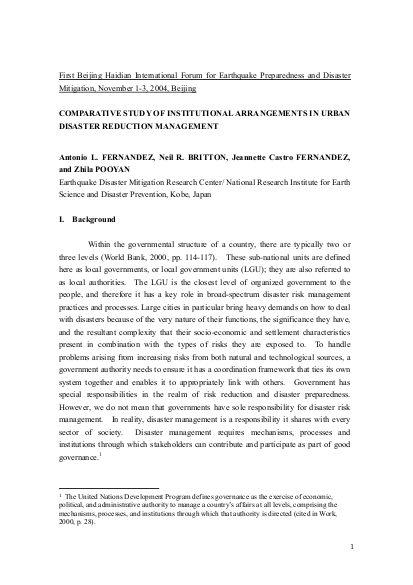
Within the governmental structure of a country, there are typically two or three levels (World Bank, 2000, pp. 114-117). These sub-national units are defined here as local governments, or local government units (LGU); they are also referred to as local authorities. The LGU is the closest level of organized government to the people, and therefore it has a key role in broad-spectrum disaster risk management practices and processes. Large cities in particular bring heavy demands on how to deal with disasters because of the very nature of their functions, the significance they have, and the resultant complexity that their socio-economic and settlement characteristics present in combination with the types of risks they are exposed to. To handle problems arising from increasing risks from both natural and technological sources, a government authority needs to ensure it has a coordination framework that ties its own system together and enables it to appropriately link with others. Government has special responsibilities in the realm of risk reduction and disaster preparedness. However, we do not mean that governments have sole responsibility for disaster risk management. In reality, disaster management is a responsibility it shares with every sector of society. Disaster management requires mechanisms, processes and institutions through which stakeholders can contribute and participate as part of good governance
Resource collections
- Evaluating humanitarian action
- UN Habitat - Urban Response Collection
- Urban Response - Urban Crisis Preparedness and Risk Reduction
- Urban Response Collection - Community Engagement and Social Cohesion
- Urban Response Collection - Economic Recovery
- Urban Response Collection - Environment and Climate Change
- Urban Response Collection - Housing, Land and Property
- Urban Response Collection - Urban Crisis Response, Recovery and Reconstruction
- Urban Response Collection - Urban Resilience
